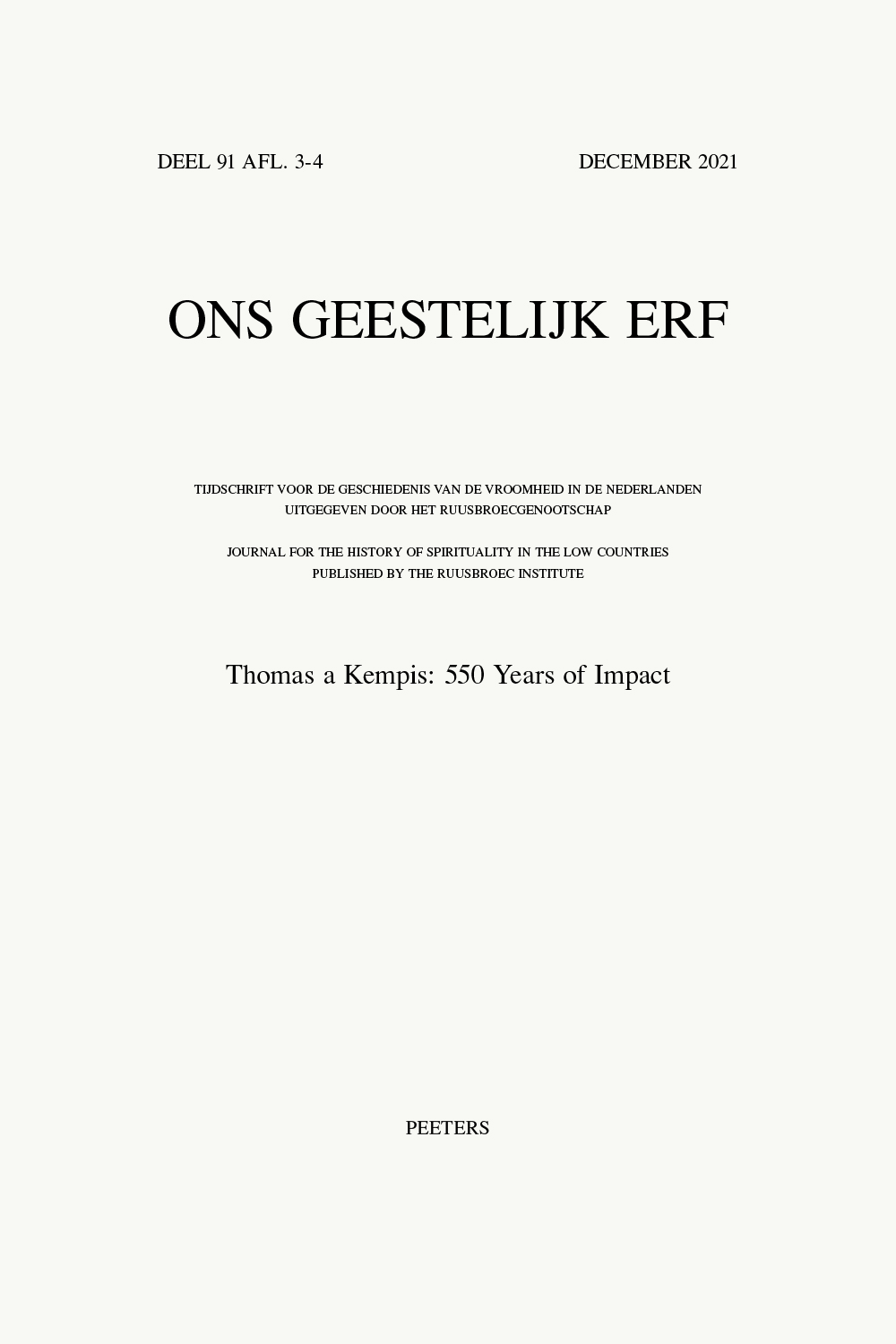 previous article in this issue previous article in this issue | next article in this issue  |

|
Document Details : Title: New Devotion in the Low Countries Author(s): VAN ENGEN, John Journal: Ons Geestelijk Erf Volume: 77 Issue: 3 Date: september 2003 Pages: 235-263 DOI: 10.2143/OGE.77.3.616495 Abstract : By speaking of a “second revolution” in the medieval understanding of religious life I am not trying to be sensational. Any such claim would require a good deal of working out in detail and might well settle upon a more suitable term. I am trying, quite simply, to alert historians to real shifts in the understanding and practice of religious life across medieval Europe in the later middle ages, helping us get past the habit of treating most developments as after-thoughts to the twelfth-century revival, however influential that moment was and remained. First, the mendicants worked a real revolution, bringing religion into towns and streets and houses, into the active as well as the contemplative life. For a century and far longer, they set the pace, enjoying enormous success and continuing influence. Second, there came a reaction, which accelerated through the mid-fourteenth century, sometimes embittered (anti-mendicant feelings ran high in the later middle ages), sometimes throwing up alternatives (the remarkable new prestige of Carthusians), sometimes embellishing and extending mendicant teachings (for instance, those of the friars Suso, Tauler, and Eckhardt). This later era, with its second turn, witnessed a decided move toward (or, if you like, re-turn to) forms of the contemplative life. While it usually now presumed charity or ascesis or teaching (though those occasionally got cast as the nemesis), women and men alike hungered for the fullest possible union with the deity, for a life apart that brought “rest” or “peace,” a unitive state beyond willing and desiring. They generally built upon intense asceticism still, now as well numerous devotional exercises (that for which the Devout are perhaps most remembered). All this, further, might well go together with a second dimension in this “revolution,” with practicing of religion outside “Religion” or beyond religion (Suso’s paradigmatic conversion after life inside the cloister). This could be expressed by cultivating the virtues outside vows, forming community or a commune outside the convent. The New Devout looked like “religious” and yet its founders, those whom Thomas presented as the “fathers,” consciously chose not to take vows. To live this way required a self-consciousness about the self, a “watching over,” a “taking care,” that placed it in constant tension with a potentially hostile or subversive environment. But at the same time they yearned to lose that carefully watched self in oneness with the deity. All this, as I see it, introduced a paradox, verging on a contradiction, between the self-making that energized Devout life and the self-emptying prerequisite to folding “nearly without distinction” into union with God: in their spirits to strive and to relax at the same time, to cultivate the self and also to resign the self. Their unusual social state rendered them potentially suspect to laity and the professed alike, a hybrid estate for which there was no easy place in medieval society. Their vision of union rendered them potentially suspect for failing to acknowledge adequately the place of grace administered through the church’s sacraments or indeed the crucial distinction between Creator and creature. And yet, in ways that the traditional upholders of medieval church and society could not easily grasp, these tensions, and the means the Devout found for articulating and negotiating them, held an appeal that reached beyond the limited circle of those formally attached to the Devout movement. This experimenting with inbetween states, in society as well as in the divine-human encounter, appears emblematic, to me at least, of broader shifts in religious life in later medieval Europe, and about these the Modern Devout were more articulate than most. |
|
